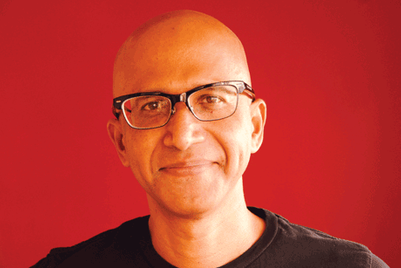
I have been asked to write about ‘Brand Balasaheb’ and ‘Brand Shiv Sena’.
First of all, no human being can be a brand, contrary to some film stars and celebrities claiming to be so. ;-)
The human being's ideas, ideology or philosophy is the brand, not the human being.
Mahatma Gandhi was a human being, Gandhism or Gandhigiri is the brand.
Karl Marx was a human being, Marxism is the brand.
Daniel Craig is the human being, James Bond is the brand.
Thankfully at least one Hindi filmmaker understands the difference.
In the film Sarkar loosely based on Balasaheb Thackeray's life featuring Amitabh Bachchan, there's this dialogue: "Usko nahin, usko soch ko maarna chahiye."
Now that the basics are out of the way, let's move on to Mr Thackeray.
Every brand has an unchanging aspect, and multiple changing aspects. (James Bond now drinks beer, not dry martinis.)
The unchanging aspect Mr Thackeray's brand of politics was an appeal to the self-worth of Maharashtrians, especially Mumbaikars.
Most commentators have already pointed out how the Shiv Sena filled the vacuum created by the Samyukta Maharashtra Samiti's self-dissolution (after they achieved the objective of carving out Maharashtra), and the role of the Congress in using the Shiv Sena against the communists who seemed to have taken over ‘mill town’ in the 60s.
(My own childhood memory of the incipient Shiv Sena was a benign organisation that provided ambulances and a parallel protective force more receptive than the bureaucratic police.)
But I believe beyond all the analyses of these facilitating factors, Mr Thackeray's genius lay in not straying from that fundamental appeal to the self-worth: while it may have begun with the young and the jobless, over time, others were attracted to this reaffirmation of their identity.
The enemies changed from South Indians, to Gujaratis, to Biharis, to Muslims, but the central appeal to identity never changed.
The 'brand' aids were precise: for a diffident youngster, the dream of a tiger within himself is very appealing. It cancels any lack of confidence.
The allusions to Shivaji Maharaj's 'challenger' status, and the transformation from 'challenger’ to ‘ruler', further fortified this fragile self-worth.
Will the brand survive its creator?
If new leaders understand the depth of the connection between the idea and the audience it inspired.
Then, yes.


.jpg&h=334&w=500&q=100&v=20250320&c=1)
.jpg&h=334&w=500&q=100&v=20250320&c=1)

.jpg&h=334&w=500&q=100&v=20250320&c=1)


.jpg&h=334&w=500&q=100&v=20250320&c=1)
.jpg&h=334&w=500&q=100&v=20250320&c=1)





.png&h=268&w=401&q=100&v=20250320&c=1)

.jpg&h=268&w=401&q=100&v=20250320&c=1)

